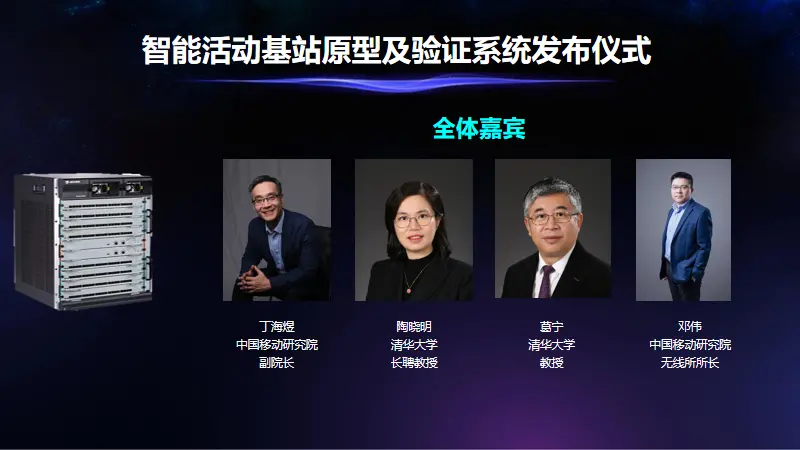With the continuous integration of satellite networks and terrestrial networks, spectrum resources are increasingly scarce and non renewable. How to efficiently use spectrum resources has become a common concern of academia and industry. Satellite ground spectrum sharing can effectively alleviate the problem of spectrum scarcity and significantly improve spectrum utilization, which will play a crucial role in future wireless systems.
Under this opportunity, Tsinghua University China Mobile Joint Research Institute will hold a satellite ground co frequency technology seminar on December 2, 2022. With the theme of satellite and ground co frequency and industry co integration, the conference invited domestic universities, scientific research institutes and industry partners to jointly carry out technical discussions on the feasibility of ground network and satellite network co frequency deployment, and explore new ways for efficient spectrum utilization and satellite and ground industry integration.

Open Phoenix News to view more HD pictures
As an important part of the seminar, Deng Wei, director of the Institute of Wireless and Terminal Technology of China Mobile Research Institute, officially released the prototype and verification system of intelligent mobile base station on behalf of Tsinghua University China Mobile Joint Research Institute. Based on the in-depth cooperation between Tsinghua University and China Mobile Joint Research Institute, China Mobile and Tsinghua University jointly carry out a series of major technological innovations in the integration of heaven and earth, promote the breakthrough of key technologies and product enhancement, explore the evolution of mobile base stations to lightweight portability and pilot applications, and continue to give play to the accumulated advantages of technology and products of the Joint Research Institute in the field of satellite ground integration, Provide technical reserves for the development of China Mobile's integrated heaven and earth network, and support the development of China's integrated heaven and earth technology and industry.

Three innovation points to solve the problem of temporary network coverage
Deng Wei introduced that emergency rescue scenarios such as floods, fires and earthquakes, remote coverage scenarios of industries such as open-pit mines, construction sites and field scientific research, and industry characteristic scenarios showing temporary support scenarios such as demonstrations and tournaments usually have high requirements for flexible, agile deployment and strong robustness of the network.
However, traditional temporary coverage means, such as emergency communication vehicles, tethered UAVs and other temporary coverage schemes, have three deployment problems. First, the return is not flexible: the traditional emergency coverage scheme using optical fiber return is not flexible and is greatly affected by environmental factors; Second, the business is difficult to expand: only traditional voice and SMS services can be supported, which is difficult to meet the diversified needs of the industry, and the business expansion ability is poor; Third, the scenarios are not comprehensive: traditional satellite antennas are large in size, high in cost, and limited in performance, making it difficult to meet the deployment requirements of multiple scenarios. For this reason, in view of the three deployment problems of temporary coverage, Tsinghua University China Mobile Joint Research Institute has developed an intelligent mobile base station for multi constellation selection, which is used to improve the network transmission capacity.
Deng Wei introduced that currently, the United Research Institute has completed the prototype design and system verification of the intelligent mobile base station, which mainly has three innovations:
Innovation point 1: Soft definition of elastic return link improves the mobile reliability of the base station. Support the on-demand return of high, medium and low earth orbit satellites to solve the dual mobile problem of base stations and satellites; Multi link adaptive selection, bundling and balancing technology can improve service transmission bandwidth and reliability.
Innovation point 2: The distributed integrated communication architecture supports rich local services. Integrated with edge computing platform, it can realize open capability and local business processing to meet the needs of multiple industries; Support public and private multi system access and heterogeneous terminal interworking to improve network efficiency and user experience.
Innovation point 3: Supersurface phased array antenna provides cost-effective full scene antenna. Reconfigurable intelligent electromagnetic surface realizes electronic phase shifting, and has flexible unit phase control function; The RF feed illuminates the antenna array to realize the RF link without complex feed network and microstrip line, which reduces the complexity of equipment, improves the spectral efficiency, and reduces the cost by an order of magnitude.
Field test meets expectations
Promote continuous evolution
Deng Wei introduced that at this stage, the prototype of the intelligent mobile base station has completed the field test verification, and the test results meet the expectations, which can fully meet the diversified needs of the industry.
In terms of business function verification, it not only has basic functions such as voice and data, but also supports multimedia services such as integrated communication and intelligent customer service; In terms of verification of adaptive star selection function, the satellite link can support two multiplexes, the adaptive dynamic handover and link aggregation functions are normal and stable, and the dual link handover delay is less than 2s; In terms of business performance verification, the downlink speed of the handheld terminal can reach 850Mbps, and the uplink speed can reach 130Mbps. At the same time, when the mobile speed of the on-board mobile communication reaches 60Km/h, the throughput can still remain stable.
Deng Wei said that in the future, the Joint Research Institute will carry out lightweight design and research and development of the prototype system of active base stations to meet diversified communication needs such as portability and flexible deployment, and carry out pilot verification for different scenarios and businesses to comprehensively empower the industry.




